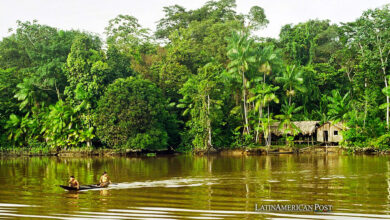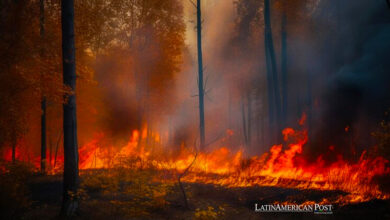How is a national park protected?
A National Park is a space that preserves nature and other resources so that the population enjoys and benefits from these elements, and for wildlife to thrive. But for this preservation to be possible, concrete legal and management measures are necessary.

Natural Park / Photo: Pixabay – Reference Image
LatinAmerican Post | Jorge Guasp
Listen to this article
Leer en español: ¿Cómo se protege un parque nacional?
The first step: the legal declaration
In the territory of a legally constituted national park, two basic legal aspects converge jurisdiction (it is a national territory) and domain (ownership of land). In Argentina, Law 22,351 (National Parks) was sanctioned in 1980, and establishes in its Article 1 that “for the purposes of this law may be declared National Park, Natural Monument or National Reserve, the areas of the territory of the Republic that by their extraordinary beauties or riches in native flora and fauna, or because of a specific scientific interest, must be protected and preserved… ”
Veda of activities that threaten the natural and cultural heritage
Article 5 of the aforementioned Law establishes the prohibition of “the alienation and lease of land of the state domain as well as the concessions of use, with the exceptions contemplated in Article 6; mining exploration and exploitation; the installation of industries; agricultural, forestry and any type of exploitation of natural resources; commercial fishing; hunting and any other type of action on wildlife, (except in cases of biological control); the introduction, transplantation, and propagation of exotic fauna and flora; human settlements; the introduction of domestic animals; to construct buildings or facilities (except those destined to the authority of application, of surveillance or security of the Nation, and to own housing in the lands of private domain). ”
Read also: Climate breakdown is increasing violence towards women
Environmental Impact Assessments
The National Parks Administration has its own environmental impact regulations, whereby all activities carried out under its jurisdiction are subject to an analysis of the actions and their environmental consequences, and to the proposal of mitigation and monitoring measures aimed at maintaining the natural conditions of the protected space.
Effective control in the territory
A general characteristic of national protected natural areas is the presence of park rangers, field personnel who carry out control and surveillance tasks, and enforce the regulations of the National Parks, while monitoring the state of flora, fauna, and other resources, both natural and cultural, and serves visitors in order to guarantee their safety and quality of experience.
Entry and permanence regulations
Most National Parks have one or more access covers, in which visitors are informed about the behavior allowed within the protected area, and about the services it provides. In the case of the most visited Parks, an access fee is usually charged. Some activities, such as hiking through areas that involve physical hazards, are carried out with a previous record in which the personal data of the visitors are recorded, and the departure times and precautions to be adopted are communicated in order to avoid accidents, fires, and damage to physical and biological resources.
Also read: January 2020 was the warmest month in history
Service concessions controlled by the administration
In National Parks, tourist services are provided through concessions and permits, which are regulated by the personnel of protected natural areas. The works are planned to minimize damage to natural resources, and their operation is monitored in order to preserve both natural attractions and visitor experience. The concessionaires are allies in the task of conserving nature since they are located in key sites from a landscape and ecological point of view (accommodation on the banks of rivers, lakes or seas; mountain peaks, etc.).
National Parks are for society, but they also need it
The human being needs nature, not only to survive but also to disconnect from the artificial and frantic life that characterizes cities. But nature also requires the human being, who in many cases represents his main enemy. The future of National Parks depends, therefore, on human behavior, not only within them but also in their environment, since nature is alien to the limits set by man.




